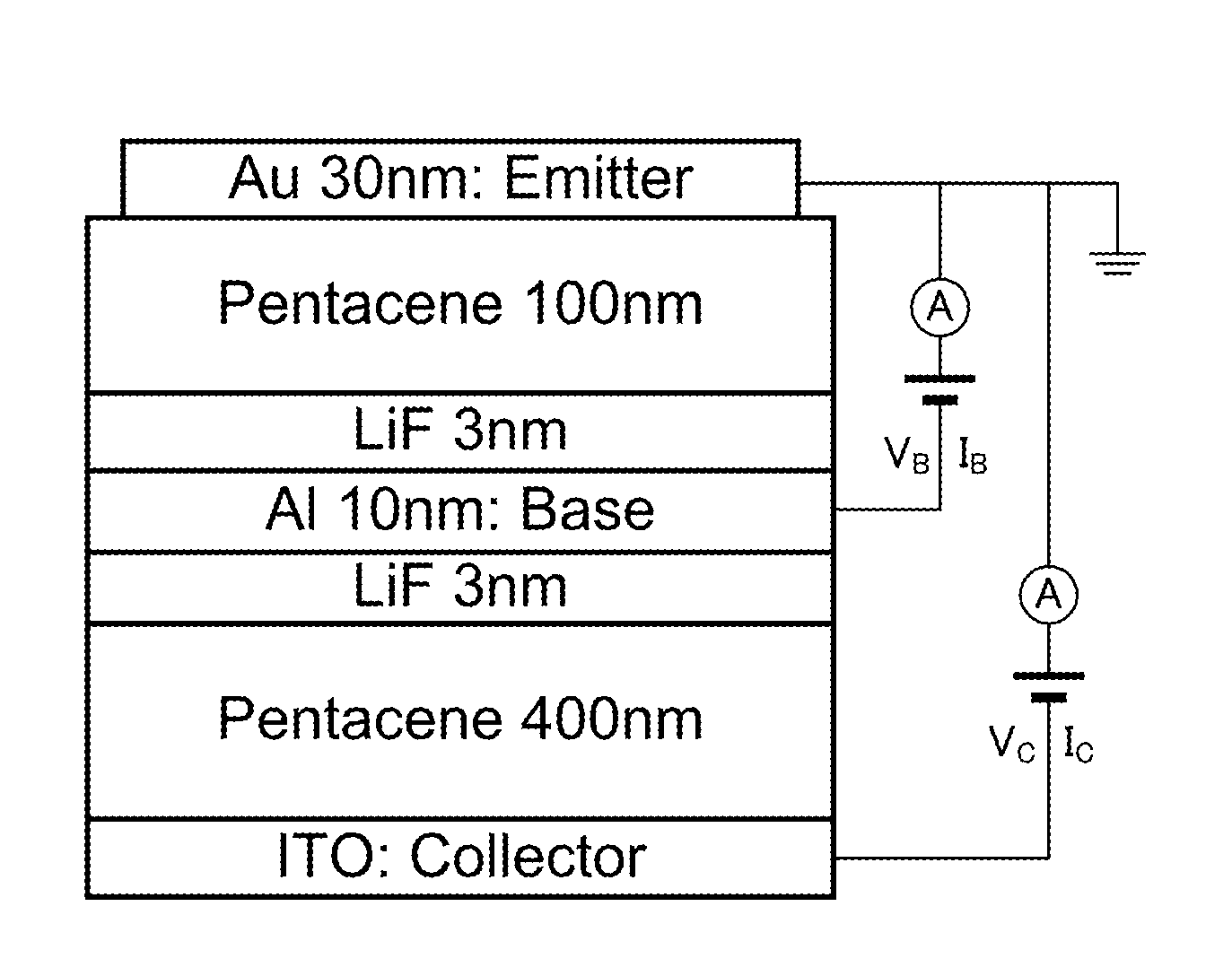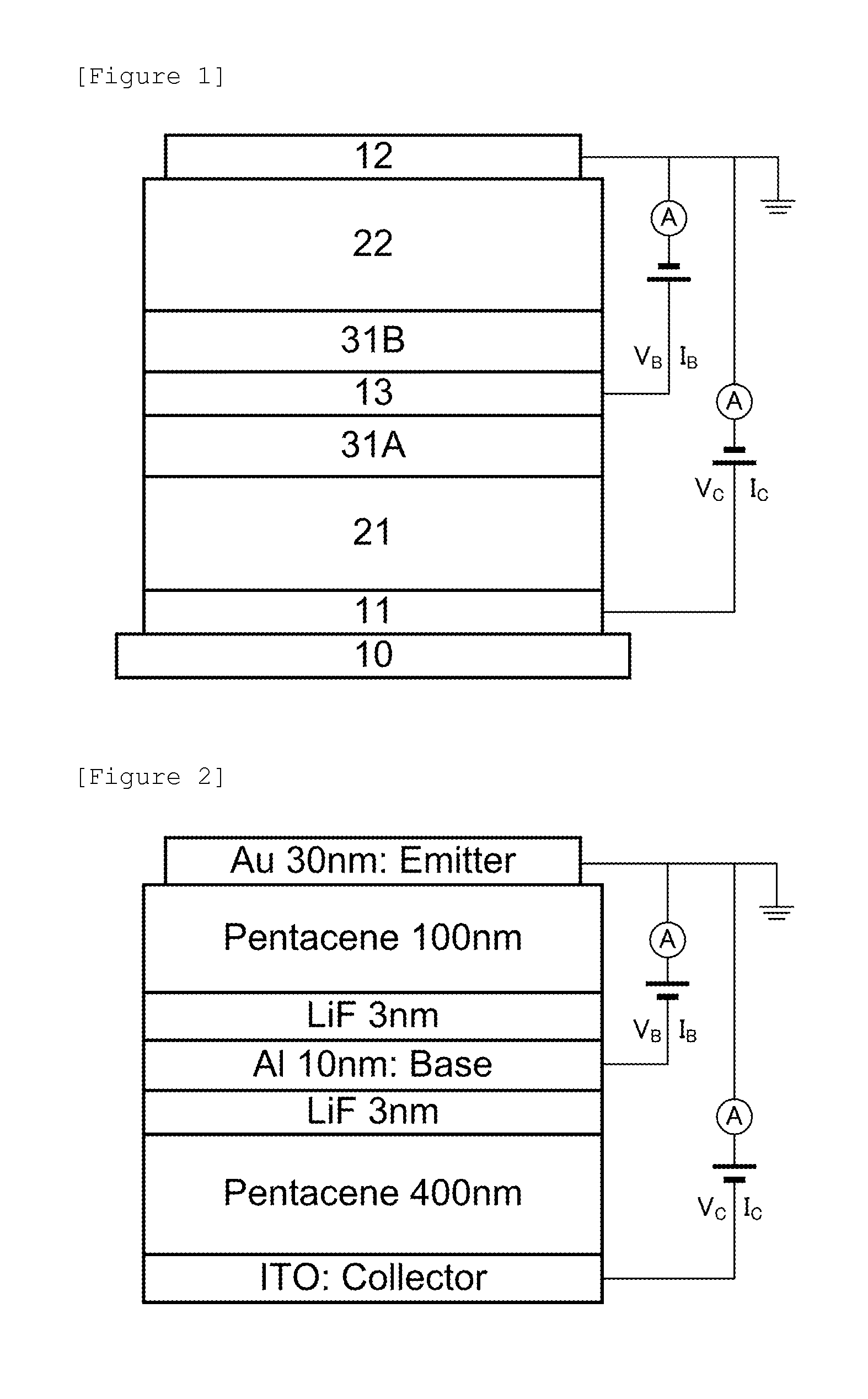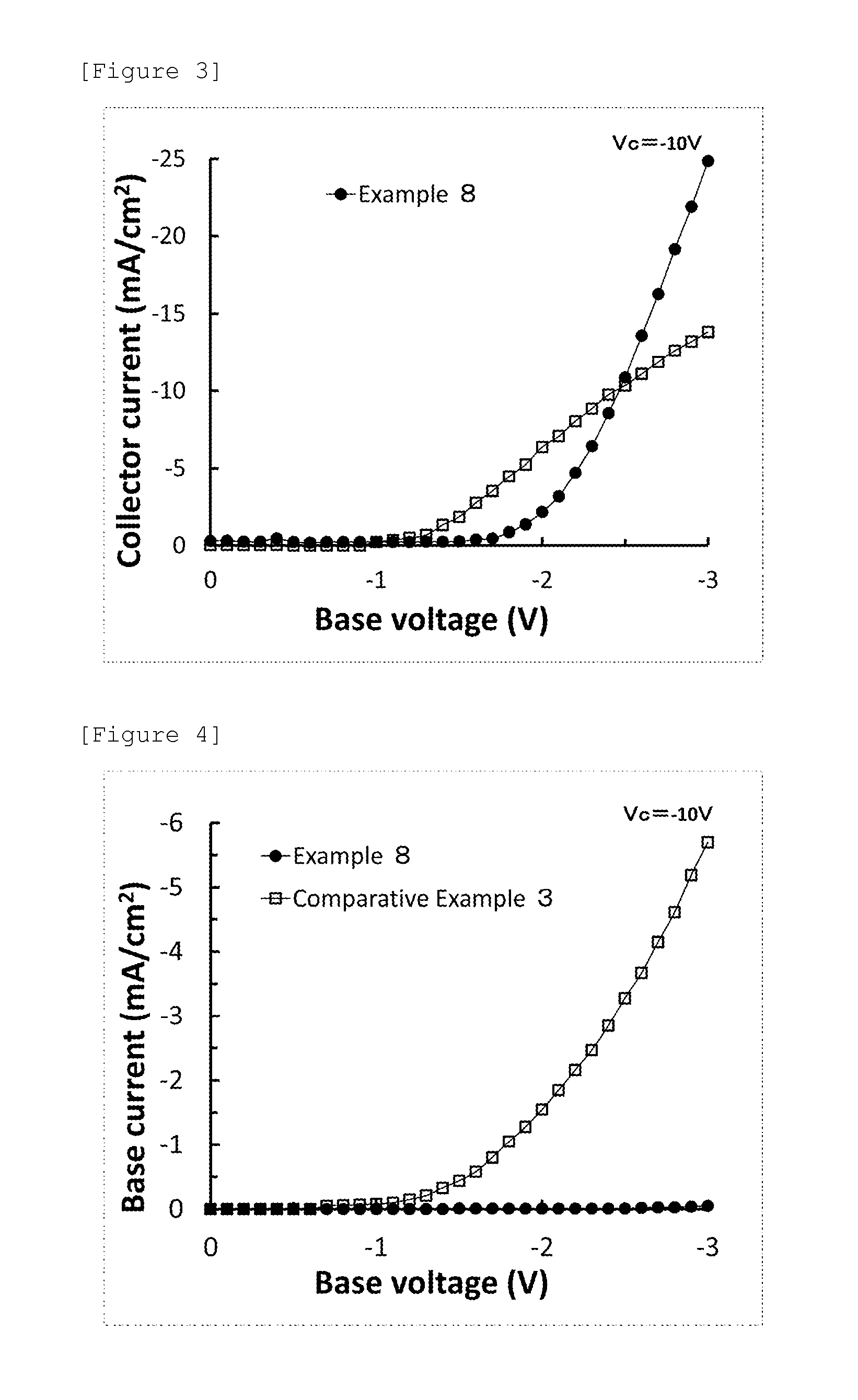Transistor element
a technology of transistor elements and transistor elements, which is applied in the direction of organic semiconductor devices, solid-state devices, thermoelectric devices, etc., can solve the problems of difficult to obtain a large current from the ofet, difficult to make the channel length several m or less, and finer display devices. , to achieve the effect of large current, excellent properties and stable operation
- Summary
- Abstract
- Description
- Claims
- Application Information
AI Technical Summary
Benefits of technology
Problems solved by technology
Method used
Image
Examples
example 1
Current Transmission Promotion Layer: Collector Layer Side Thickness 1 nm / Emitter Layer Side Thickness 3 nm
[0095]Head-to-tail P3HT [regioregular-Poly(3-hexylthiophene-2,5-diyl)] was dissolved in toluene, and a P3HT solution was prepared so that the concentration became 20 mg / mL. The obtained P3HT solution was applied on an ITO transparent substrate by a spin coater to form a collector layer (250 nm). Next, a current transmission promotion layer comprising lithium fluoride (LiF), the current transmission promotion layer having a thickness of 1.0 nm was formed thereon, and further a base electrode layer comprising aluminum, the base electrode layer having an average thickness of 10 nm was formed by a vacuum deposition method. Thereafter, heat treatment was conducted at 150° C. under the atmospheric pressure for 1 hour to form an oxidized film layer (dark current suppression layer) on the surface of the aluminum electrode. Next, a current transmission promotion layer comprising lithium...
example 2
Current Transmission Promotion Layer: Collector Layer Side Thickness 0.6 nm / Emitter Layer Side Thickness 1 nm
[0097]Head-to-tail P3HT [regioregular-Poly(3-hexylthiophene-2,5-diyl)] was dissolved in toluene, and a P3HT solution was prepared so that the concentration became 20 mg / mL. The obtained P3HT solution was applied on an ITO transparent substrate by a spin coater to form a collector layer (250 nm). Next, a current transmission promotion layer comprising lithium fluoride (LiF), the current transmission promotion layer having a thickness of 0.6 nm was formed thereon, and further a base electrode layer comprising aluminum, the base electrode layer having an average thickness of 10 nm was formed by the vacuum deposition method. Thereafter, heat treatment was conducted at 150° C. under the atmospheric pressure for 1 hour to form an oxidized film layer (dark current suppression layer) on the surface of the aluminum electrode. Next, a current transmission promotion layer comprising lit...
example 3
Current Transmission Promotion Layer: Collector Layer Side Thickness 0.6 nm / Emitter Layer Side Thickness 3 nm
[0099]Head-to-tail P3HT [regioregular-Poly(3-hexylthiophene-2,5-diyl)] was dissolved in toluene, and a P3HT solution was prepared so that the concentration became 20 mg / mL. The obtained P3HT solution was applied on an ITO transparent substrate by a spin coater to form a collector layer (250 nm). Next, a current transmission promotion layer comprising lithium fluoride (LiF), the current transmission promotion layer having a thickness of 0.6 nm was formed thereon, and further a base electrode layer comprising aluminum, the base electrode layer having an average thickness of 10 nm was formed by the vacuum deposition method. Thereafter, heat treatment was conducted at 150° C. under the atmospheric pressure for 1 hour to form an oxidized film layer (dark current suppression layer) on the surface of the aluminum electrode. Next, a current transmission promotion layer comprising lit...
PUM
 Login to View More
Login to View More Abstract
Description
Claims
Application Information
 Login to View More
Login to View More - R&D
- Intellectual Property
- Life Sciences
- Materials
- Tech Scout
- Unparalleled Data Quality
- Higher Quality Content
- 60% Fewer Hallucinations
Browse by: Latest US Patents, China's latest patents, Technical Efficacy Thesaurus, Application Domain, Technology Topic, Popular Technical Reports.
© 2025 PatSnap. All rights reserved.Legal|Privacy policy|Modern Slavery Act Transparency Statement|Sitemap|About US| Contact US: help@patsnap.com



